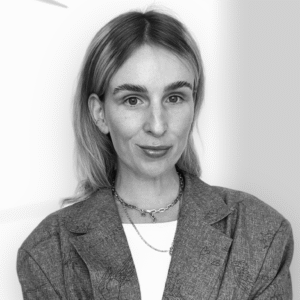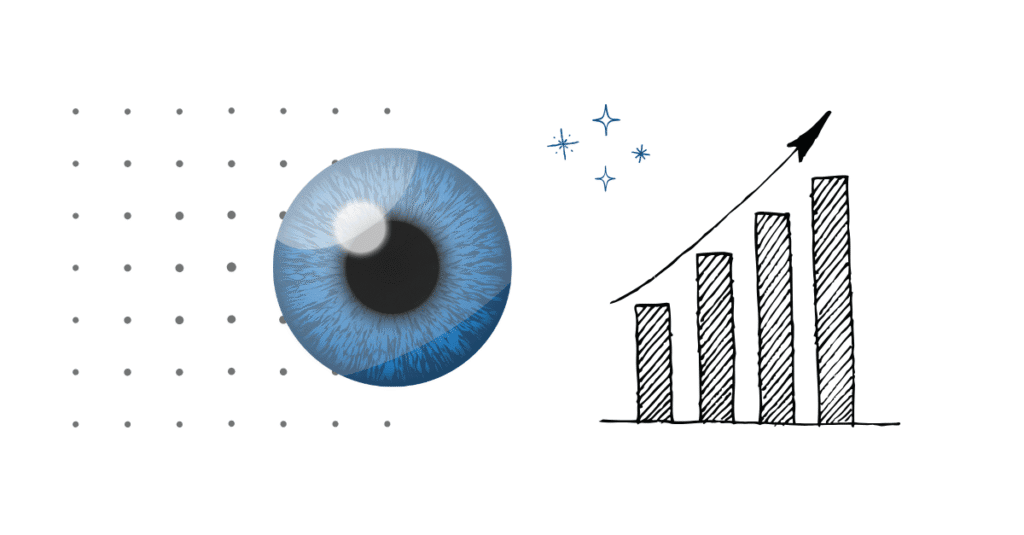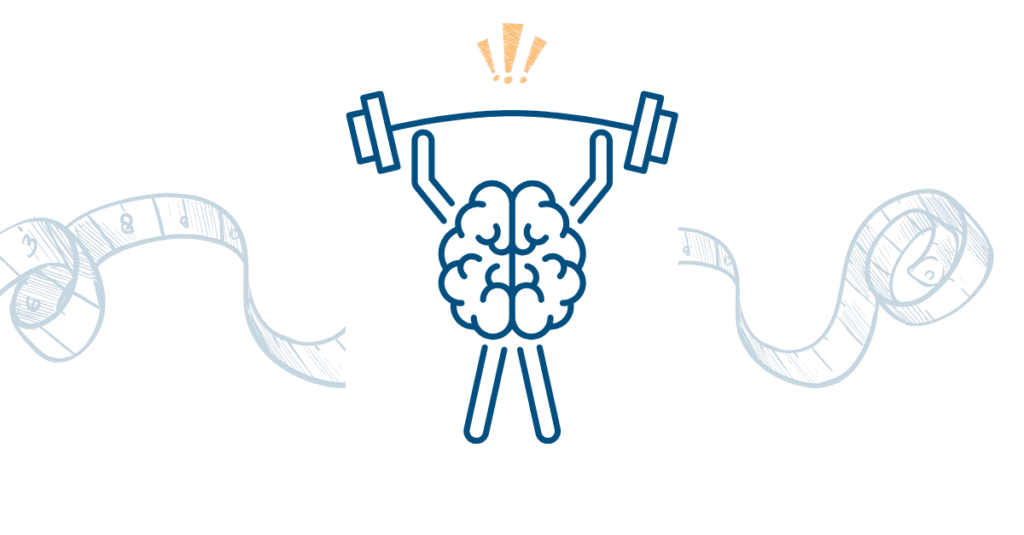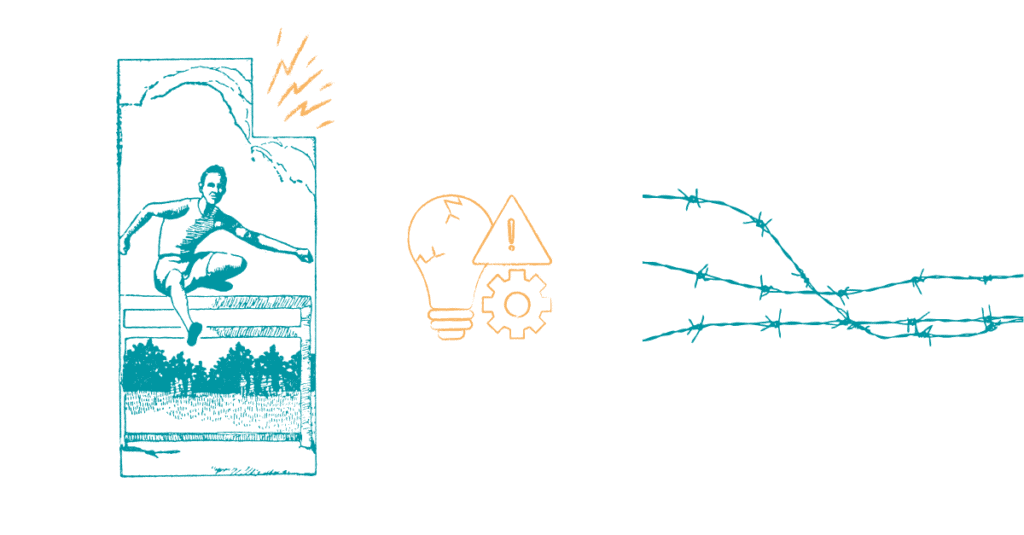The half-life of training knowledge is getting shorter and shorter – especially in AI transformation. While technologies develop exponentially, human development follows different laws. At triangility, we have found an answer to this: learning journeys that focus on continuous development, practical application, and sustainable anchoring of new skills. But what makes this approach so effective – and why do leaders in particular benefit from it?
What is a learning journey?
Learning is not a once-off event, it is a process. This is precisely where the concept of the Learning Journey, which we at triangility have developed to perfection, comes in. But what exactly is behind it?
A learning journey describes a structured, multi-stage learning process that extends over a longer period of time. Instead of attending one-off training sessions, learners pass through various stages that build on each other in a targeted manner. Different learning methods are used, ranging from interactive online modules and workshops to accompanying coaching sessions.
An important aspect of the Learner Journey is that it takes into account the different phases of the learning process. These phases include introduction, consolidation, and application of what has been learned, with a focus on individual learning paths and practical transfer.
What makes it special is that learning does not take place in isolation, but as a continuous development process. While traditional training courses often only impart selective knowledge, a learning journey helps participants to gradually acquire new skills, apply them directly, and anchor them in the long term. At triangility, we believe that futures are human – and human development requires a holistic approach.
Why do we talk about a “journey”?
The term “journey” is central to triangility’s program – because transformation is not a sprint, but a conscious development.
Many leaders today struggle with the jungle of buzzwords and offers of various leadership approaches, which often create more confusion than clarity. We have taken the time to save you time by identifying the common essence of various new leadership models and translating them into a set of principles, competencies, and practical tools.
Our learning journeys follow a clear structure:
The starting point: Where do the learners stand? What skills should be developed?
The journey: Knowledge is built up and deepened through various learning formats.
The application: What has been learned is actively tested in everyday working life.
Reflection: Development is further promoted through feedback and exchange.
This structured approach fundamentally distinguishes triangility Learning Journeys from traditional training courses. While the latter are forgotten after a few days, we achieve sustainable skills development – measurable and tangible.
Learn more about our learning journeys and programs.
What is the goal of a learning journey?
Knowledge alone is not enough – it must be understood, applied and anchored in the long term. This is precisely the aim of a learning journey. While traditional training courses often only provide short-term impulses, a learning journey enables continuous development that brings about real changes in behavior.
Why do we need a structured learning journey?
Conventional training usually focuses on a one-off event: an intensive workshop, a seminar or e-learning content is supposed to be enough to teach new skills.
But practice shows that:
Knowledge quickly evaporates – without repetition and application, only a fraction of the content is retained.
Theory alone does not lead to change – if you really want to master something, you have to practise it several times.
Everyone learns differently – A learning journey takes individual needs and learning styles into account.
The Learning Journey solves this problem by understanding learning as a long-term process. New content is not only taught, but also tested and reflected on step by step.
Why the triangility approach works
Our experience from over 100 transformation projects shows that 70% of change initiatives fail due to human factors, not technology. That’s why our learning journeys start where it really matters:
- Mindset transformation: From a culture of control to a culture of empowerment
- Competence building: Ambidextrous leadership – stabilizing and innovating at the same time
- Cultural change: Integrating new ways of working into everyday organizational life
The Human-AI Leadership Journey, for example, enables leaders to overcome the eight typical barriers to AI transformation – from a lack of vision to cultural resistance.
Learning that works in everyday life
Another key purpose of a learning journey is direct integration into everyday working life. Instead of consuming knowledge detached from practice, learners are actively encouraged to apply what they have learned in real-life situations.
Example: A manager not only completes a seminar on “Empathic leadership”, but also applies the learning content in real situations:
- Implements the learning content in real employee meetings
- Receives feedback from colleagues or mentors
- Takes part in reflection sessions to share experiences
- Uses online impulses to further deepen certain topics
This practical approach means that new skills do not remain theoretical – they become a real development.

Why is a single training session often not enough?
An intensive seminar, an inspiring workshop – and then it’s back to the daily grind. Who hasn’t experienced this? Despite good intentions, what you have learned quickly fizzles out because it is not sustainably integrated into everyday life. This is precisely the problem with one-off training courses.
The problem with one-off training courses
Traditional training courses focus on short-term knowledge transfer. However, this often leads to the following challenges:
- Knowledge is lost – Studies show that up to 70% of what is learned is forgotten after a few weeks (Ebbinghaus’ forgetting curve).
- Lack of application possibilities – Without repeated practice, much of the content remains pure theory.
- No long-term change in behavior – New knowledge alone does not automatically lead to new habits.
- One size fits all – Traditional seminars rarely take into account the individual learning needs of participants.
The result: despite high investment in training, there is often no lasting effect.
Why a learning journey is more effective
A learning journey solves precisely these problems by making learning a continuous process. Instead of consuming knowledge in a one-off event, learners go through a series of learning steps that build on each other in a targeted manner.
- Repetition & consolidation – Knowledge is better retained through different learning phases.
- Direct application in practice – learned content is immediately put to the test in everyday working life.
- Support & feedback – Mentors, coaches or peers help to overcome challenges.
- Individual adaptation – Everyone learns at their own pace and according to their needs.
An example: Instead of a generic leadership seminar, participants in our Human-AI Leadership Journey undergo a six-month transformation process that brings about measurable change.
While a one-off training course often only provides impetus, a learning journey ensures real, sustainable development – especially in areas such as leadership or change management.
Get exclusive access to cutting-edge insights and expertly curated tools on digital evolution, cultural transformation, future-forward thinking, resilience, mindfulness, and the future of work.
Advantages of a learning journey compared to traditional learning methods
So why a learning journey instead of a traditional seminar? The difference lies not only in the duration, but above all in the sustainability and effectiveness of the learning process.
1. Learning journeys take longer – with continuous mentoring
The pandemic made traditional training obsolete, but it also offered an opportunity for redesign. We didn’t just switch to a virtual context, we rethought the entire structure of our training courses. Instead of packed day workshops, we have extended the learning process to several weeks or even months.
- Gradual absorption of knowledge instead of information overload
- Regular application in practice ensures deeper internalization
- Repetition mechanisms help to store knowledge permanently
2. learning is more flexible and easier to integrate into everyday working life
Further training often means taking a day or two out of the working day, after which the tasks that have been left behind pile up. A learning journey focuses on flexible, on-the-job learning that can be integrated into everyday life.
- Learning in small units – content is taught in chunks
- Digital and hybrid formats – knowledge can be accessed anytime and anywhere
- Learning “on the job” – no long interruptions due to seminars lasting several days
3. focus on practical relevance and direct application
The biggest problem with traditional training courses? They often remain too theoretical. A learning journey ensures that what has been learned is immediately put to the test in practice – and is therefore much more effective.
- Direct implementation in day-to-day work – knowledge is applied immediately
- Case studies, simulations & interactive exercises make theory tangible
- Mentoring and peer learning support practical transfer
4. individual adaptation instead of “one-size-fits-all”
Everyone learns differently – but traditional training courses are usually designed for an entire group, regardless of individual strengths or needs. Learning Journeys, on the other hand, adapt to the learner.
- Personalized content – everyone learns exactly what is relevant to them
- Individual learning pace – no overload or underload
- Different learning formats – video, text, practical exercises, coaching & exchange
5. social learning strengthens motivation and team dynamics
Learning is not an isolated activity. Learning Journeys therefore focus on social learning in which participants actively exchange ideas and learn from each other.
- Peer groups and mastermind sessions promote the transfer of knowledge
- Feedback rounds and reflection phases provide new perspectives
- A common learning goal increases motivation and commitment
How learning journeys improve the development of managers
Managers today are under immense pressure: they have to motivate teams, manage change and make quick, well-founded decisions in uncertain times. However, traditional leadership training often falls short – because leadership is not theory, it is lived practice. This is precisely why learning journeys are the better choice for managers.
Why do managers particularly benefit from a learning journey?
A single training course can provide food for thought, but in order to really internalize leadership skills, continuous development and application are required. Learning journeys enable exactly that:
- Change takes time – leadership styles cannot be changed overnight, but develop through reflection and experience.
- Real leadership situations as a learning environment – managers can try out and optimize what they have learned directly in their day-to-day work.
- Regular feedback for more self-reflection – Peer exchanges and coaching give managers new perspectives.
- Personal development at your own pace – Every manager has individual strengths and development areas that can be addressed in a targeted manner.
Components of an effective learning journey for managers
A learning journey for managers is made up of several coordinated learning formats. It combines:
Impetus through expert knowledge: Digital learning modules, videos or specialist articles provide in-depth knowledge on leadership topics.
Practical application in day-to-day management: managers implement new methods directly in meetings, feedback discussions or strategy decisions.
Coaching & mentoring: Individual or group coaching helps to reflect on personal challenges and develop solutions.
Peer learning & exchange in groups: Mastermind groups or peer counseling allow people to learn from and support each other.
Reflection & continuous feedback: Managers regularly analyze their progress and readjust their development.
Practical example: What a learning journey for managers can look like
A company wants to develop its managers in empathetic and agile leadership. Instead of a two-day seminar, a three-month learning journey is implemented:
Weeks 1-2: Online learning modules on “Psychological safety in the team” and “Establishing a feedback culture”
Week 3-4: Application: Managers conduct structured feedback discussions with their team
Week 5-6: Online reflection and exchange with other managers about experiences and challenges
Week 7-8: Individual coaching to discuss personal development areas
Week 9-10: New impetus through expert session on “Agile leadership in hybrid teams”
Week 11-12: Final workshop with reflection, lessons learned and concrete implementation strategies
The result? Managers not only implement new leadership approaches – they make them their new habit.
triangility: More than just further training
Traditional training is not enough to bring about real change. triangility develops customized learning journeys that develop managers in a targeted manner – practical, sustainable and effective.
All our learning journeys are based on the following 5-step impact process:
- Listening – We define your challenge and derive the acute learning needs from it.
- Developing ideas – We develop ideas, provide insights into the industry, draw on experience, and share knowledge from a wide range of disciplines within our expert community to jointly create a basis for diverse solution approaches.
- Design & test – We select the most promising solution using our community master brain and work with our leadership and learning experts to create customized training content in a co-creative process.
- Impact – We guide your leaders through a unique learning experience.
- Change – We continuously support leaders in establishing their new skills in a measurable and sustainable way in their everyday work.
Start your learning journey now!
The future won’t wait. But it is waiting for people like you – leaders who have the courage to break new ground.
Discover our learning journey programs.
Arrange a no-obligation initial consultation and get your leaders ready for the future.

Core principles, competences and practices for modern leadership.






